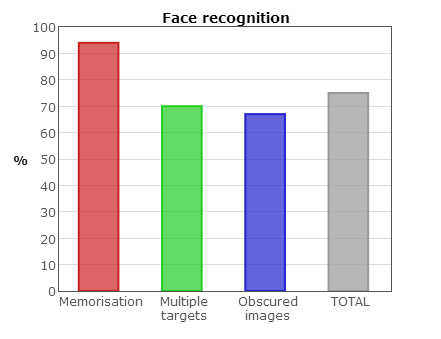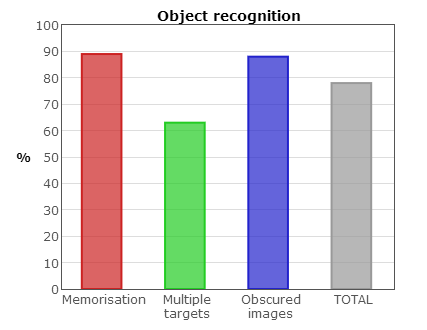Sample Feedback Page
A sample version of the feedback page is reproduced below, as it would have appeared to a twin after completing the Perception web battery.
Perception
Many thanks for your participation! This is the end of the study. Your voucher will be sent to your email address within the next few days, and you will be entered into the prize draw. You can restore your browser window to its normal size now (e.g. press F11 to exit full-screen mode, for most browsers).
This page shows some of your results from the activities you've just completed. They are designed to be hard, so very few people get high scores. If you want to keep a copy of your results, you can save or print this page. While the study is still running, you can also get back to this page at any time by logging in to the website with the same code you used earlier.
If you have any queries or comments about the study, please contact the TEDS team by phone on (0800) 317029 (freephone), or by email at teds-project@kcl.ac.uk.
You can close your browser or navigate away from this page whenever you wish (or click 'Log out' above). Thanks again for your help!
Face Recognition
You scored:
17 / 18 for the first part of the test (memorisation),
21 / 30 for the second part, where the target could be
any memorised face, and
16 / 24 for the final part, where faces were obscured.
Total: 54 / 72 (75.0%)

Object Recognition
You scored:
16 / 18 for the first part of the test (memorisation),
19 / 30 for the second part, where the target could be
any memorised car, and
21 / 24 for the final part, where the cars were
obscured.
Total: 56 / 72 (77.8%)

Perception Questionnaire
Your scores are shown below for the different aspects of perception measured by the questionnaire.
You scored:
17 / 24 for face recognition
16 / 24 for face emotion perception
14 / 24 for non-face emotion perception (i.e., from
voice and body language)
14 / 24 for (non-social) object recognition (i.e.,
58.3%)
Total social perception: 47 / 72 (65.3%)
- Face recognition is the ability to learn to recognise new faces, and to identify familiar faces, even if the person has changed since the last time you saw them. People vary in the ease and speed with which they do this.
- Face emotion perception is the ability to tell what someone is feeling from the expression on their face. This includes telling the difference between different emotional expressions (such as anger or happiness), and also more complex skills such as being able to spot a fake smile.
- Non-face emotion perception is the ability to tell what someone is feeling from their voice (e.g., on the phone) or body language (e.g., folded arms suggesting that someone may be defensive), even when you can't see their face.
- Object recognition is our ability to identify familiar objects, learn to recognise new ones, and tell similar objects apart. As with face recognition, some people do this more easily than others.
- Total social perception is calculated from the three social abilities above (face recognition, face and non-face emotion perception). This is our ability to process information in the social world - including recognising familiar faces and 'reading' people's emotions from their faces, voices, and body language. Among other things, these skills allow us to identify the people we know, and to interact socially by understanding how other people are feeling.